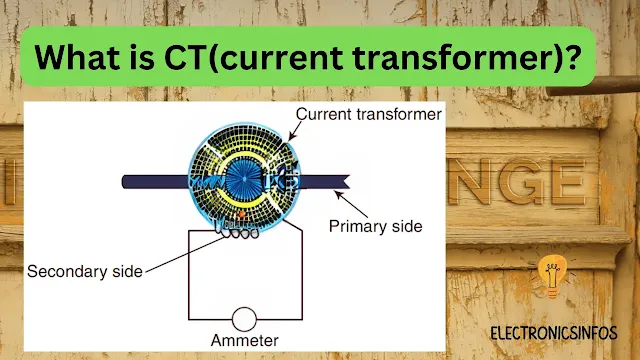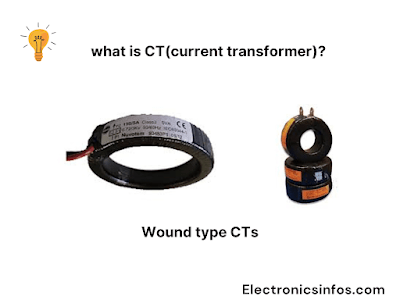What is CT(current transformer)?
A Current Transformer (CT) is an instrument transformer designed to measure alternating current (AC) in electrical systems. It consists of a primary winding, which carries the current to be measured, and a secondary winding which generates a proportionally reduced current.
CT (current transformer) working principle
CT (current transformer) wiring diagram
CT(current transformer) Formula
- 'I primary' represents the primary current flowing through the primary winding of the current transformer.
- 'I secondary' represents the secondary current flowing through the secondary winding of the current transformer.
- 'N primary' represents the number of turns in the primary winding.
- 'N secondary' represents the number of turns in the secondary winding.
CT (current transformer) Types
There are various types of CTs including
- Bar-type CTs
- Wound CTs
- Window-type CTs
Bar-type CTs
These CTs are commonly used for primary currents ranging from a few hundred to a few thousand amperes. They consist of a single primary turn and are primarily used in switchgear and industrial applications.
Wound type CTs
These CTs have multiple primary turns, allowing them to handle higher primary currents. They are extensively used in power generation and transmission systems.
Window-type CTs
These CTs have a split-core design, which allows them to be easily installed around existing conductors without interrupting the circuit. They are commonly used in retrofit applications or in situations where it is not feasible to disconnect the circuit.
CT (current transformer) ratio table
CT (current transformer) Application
Metering
CTs are widely used for accurate measurement of current in power distribution systems. They enable the conversion of high primary currents into proportional low secondary currents, which can be safely and precisely measured by ammeters or energy meters.
Protection
CTs are an integral part of protection schemes in electrical systems. They provide current inputs to protective relays, which monitor the magnitude and direction of current flow. In abnormal current conditions such as short circuits or overloads, the relays activate protective devices like circuit breakers to isolate the faulty section and prevent damage.
Power Quality Analysis
CTs are used in power quality monitoring systems to analyze and record current waveforms. By capturing detailed data on current harmonics, power factors, and distortion, CTs help in identifying and resolving power quality issues, ensuring efficient and reliable operation of electrical systems.
Also, Read on Electronicsinfos!
Accuracy Class Of Current Transformer
How to Reduce The Transformer Losses?
Single Phase Transformer Vs Three Phase Transformer
EMF Equation Of Electrical Transformer
What is a Step-Up Transformer?


%20wiring%20diagram.webp)
%20Formula.png)




-Electronicsinfos.png)
.png)


0 Comments
please do not insert spam links